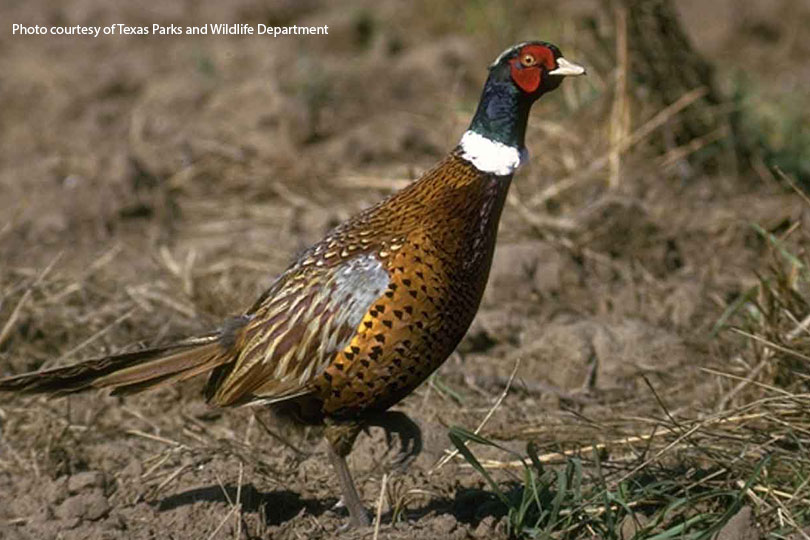By Jessica Domel
Multimedia Reporter
Pheasant hunting season opens in 37 Texas counties on Saturday, and the Texas Parks and Wildlife Department (TPWD) is forecasting a below-average season for hunters.
“Every year, Texas Parks and Wildlife Department biologists in the Panhandle and South Plains run about 44 survey routes across the region. We come up with an estimate of average birds per route,” John McLaughlin, TPWD upland game bird program leader, said. “Unfortunately, this year, we’re in the sort of continuation of a long-term trend over the last five or six years where dry conditions and limited cover have really limited pheasant production.”
This year, TPWD biologists observed .84 pheasants per route.
The 15-year-average is 4.99 birds per route.
“We do have birds in the region. We certainly saw broods this year, and there are going to be exceptions,” McLaughlin told the Texas Farm Bureau Radio Network. “Generally, we do think that hunting will be below average this year, unfortunately, for most.”
The decline in pheasant numbers is due to a number of factors, including the long-term drought and the impact that has had on vegetation.
“Pheasants rely on some of that taller cover. Unfortunately, drought has taken a toll,” McLaughlin said. “Commodity prices also affect what is planted in this part of the state. Sometimes crops and the varieties that are out there can limit pheasants in some ways.”
A decline in the number of acres planted under the Conservation Reserve Program (CRP) also impacts the pheasant population.
According to TPWD, the number of pheasant hunters and pheasant harvest peaked in the mid-to-late 1980s.
There were nearly 45,000 pheasant hunters in 1986-87 and roughly 122,000 pheasants were harvested annually in 1987-88 and 1988-89.
“The 1980s were a good time for pheasants. It was a combination of a few things. We did have a lot of that CRP acreage going in. We had a variety of agricultural crops, but we were also releasing pheasants,” McLaughlin said. “We stopped doing that, so we’re a little bit more of a natural cycle. But we did see a boost after some of those releases and a boost when we got some of that grass in.”
Since 2010, pheasant harvest in Texas has only exceeded 20,000 twice—in 2017 and 2021.
“Really over the last 15 years, we’ve had two really big droughts. We had the drought back in 2011. I think in the fall of 2011, about 95% of the state was in exceptional drought,” McLaughlin said. “That really knocked back our population at that point. We did see a slight rise in 2015 and ’16 with some of that rain. We got some production, but unfortunately in ’17, ’18 and continuing on into this year, we just haven’t gotten rain at the right time and haven’t been able to grow that cover. Birds just have not been able to put broods and chicks on the ground, and that’s unfortunately limited the number of birds we see out there on the landscape.”
There are some areas where hunters are more likely to bag a pheasant this year.
“There’s probably a higher density, higher abundance, of pheasants in the Panhandle. We think about those northern Panhandle counties (and) some of those northwestern Panhandle counties,” McLaughlin said. “With the agricultural complex up there and some of the public grasslands, there’s just a little bit more opportunity.”
Pheasant season in the Panhandle is Dec. 2-31.
The daily bag limit is three male pheasants. The possession limit is nine.
“Pheasants are one of the species that we do require ‘proof of sex,’” McLaughlin said. “It’s unlawful to have a pheasant without proof of sex attached to it until it gets to its destination for final processing. That proof of sex is either one leg, including the spur, attached to the pheasant carcass. Probably more common for folks is just to keep the entire bird whole, so we say the entire plumage attached to the carcass.”
Pheasant hunters are required to have a valid Texas hunting license, upland game bird endorsement and proof of completion of Hunter Education if the hunter was born on or after Sept. 2, 1971.
Pheasant hunting regulations are available in the print and online Outdoor Annual.


Leave A Comment